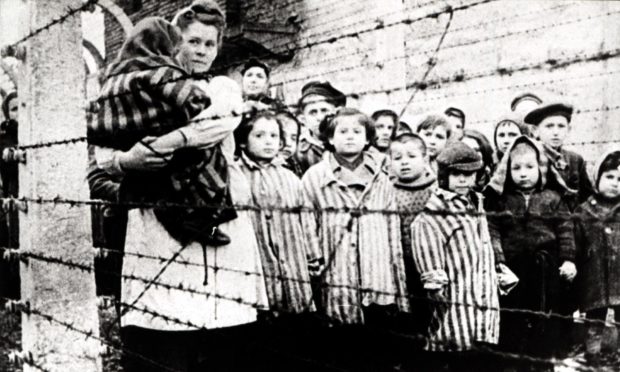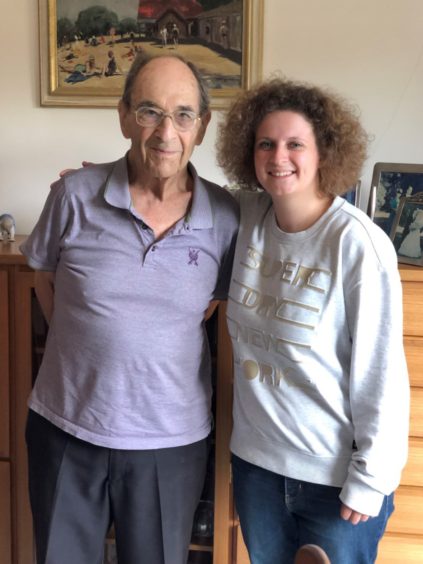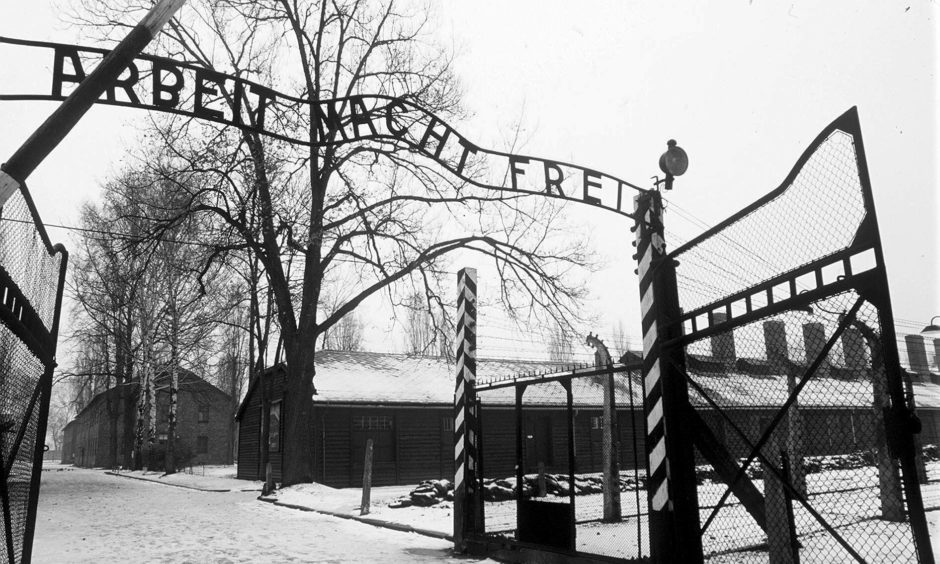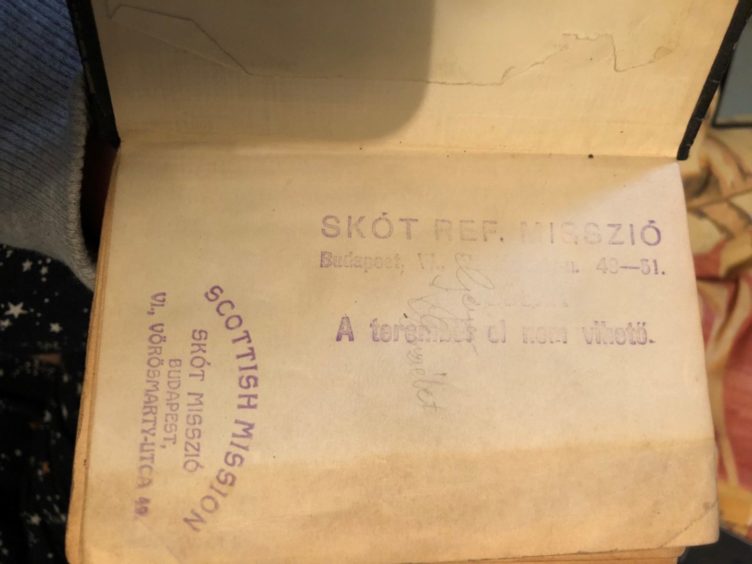It was a time when many brave, resourceful people shone a candle in the darkness to fight Nazi oppression and genocide.
Even as millions of Jewish people were being despatched to the death camps whose names are infamous in history such as Auschwitz and Belsen, there were others who escaped and recounted their accounts of living in a hellish situation.
One was Gabriel Forrai, a retired GP who settled in Inverness at the end of the Second World War, after escaping incarceration with the help of the Church of Scotland.
Mr Forrai was given sanctuary in the Scottish Mission in Budapest in Hungary in January 1944 and staff helped keep him safe until the conflict was over.
His granddaughter, Grace Forrai, has now shared his story to commemorate the end of the tragedy of the Holocaust where six millions Jews were murdered under Nazi rule.
Thousands died on the banks of the Danube
She has revealed how staff at the Scottish Mission arranged for her grandfather, who was just 14 at the time, his brother Martin and mother Klari to be given safe passage to Britain, via Switzerland and France.
They were eventually reunited with dad and husband, Elmer, who moved to Inverness before the war broke out in 1939.
Miss Forrai said she was eternally grateful to the Church of Scotland for saving her family’s life and accepts she and her father, Forbes, and sister Olivia would not exist if her grandfather, who is now 90, had been rounded up with as many as 20,000 Jews from the ghetto and shot on the banks of the River Danube.
The atrocity was carried out by the Arrow Cross Party between December 1944 and February 13 1945 when Budapest was liberated by the Russians.
Jane Haining’s heroic legacy lives on
Miss Forrai, a telecoms professional, spoke of how her grandfather has a box at his home in Essex containing his Yellow Star of David, a cloth Scottish Mission armband, which illustrated that the wearer was under the Kirk’s protection, and a book of psalms bearing a Scottish Mission stamp.
Jane Haining, the only Scot to be honoured at the Yad Vashem Holocaust memorial in Israel for protecting Jewish girls, was the matron at the Scottish Mission boarding school between 1932-1944.
It is likely she met the Forrai family before she was arrested in April, 1944 and taken to Auschwitz in Nazi occupied Poland where she died around three months later.
Miss Forrai said: “My great-grandfather was a medical researcher and moved to Scotland before the war broke out.
“He was trying to get his family over, but it was very difficult.
“My granddad and his brother were on the same passport as their mum and she was given the choice of leaving without the boys but she decided to stay with them and they were trapped in Hungary.
“The family were rounded up and moved in with my great-grandmother in a yellow star flat in Budapest where they lived with 12 other people.”
Living on the edge of a precipice
She continued: “The boys and my great uncle were forced into slave labour and cleared up the rubble from bombed out buildings.
“My great-grandmother did not know if they would be coming home at night.”
Miss Forrai has delved into her family’s past and discovered that food was very scarce in the ghetto during these horrifying years.
She added: “My granddad told me that they often only had one egg and some flour between the three of them to eat.
“They managed to avoid being rounded up and secured protection from the Scottish Mission somehow and survived until the end of the war.”
The family triumphed over many adversities
Gabriel Forrai did not speak a word of English when he first went to school in Inverness but soon learned the language and thrived in the Highlands.
He became a British citizen, studied medicine at a Scottish university and became a GP, moving back to Inverness where he met his wife, Eileen.
After completing national service in Germany, the couple moved to Durham in north-east England and then to London where he spent most of his career as a GP.
Miss Forrai, who lives in Essex, said: “As a Christian, I think it is fantastic that people in the Scottish Mission were still there helping people, despite the unimaginable horrors of war all around them.
“They stood firm and took in those desperately in need and protected them.
“I feel so very grateful because if they didn’t, my family could have quite easily been shipped off to Auschwitz or shot and I would not be here.”
Haining saved many Jewish people from the Nazis
The Church of Scotland has had a presence in Budapest for 180 years and the Scottish Mission School was located in a building next door to St Columba’s Church.
According to a book about Miss Haining, who grew up in Dunscore near Dumfries, staff saved “many” Jews by helping them emigrate to Britain.
Author Mary Miller wrote: “Jewish refugees from countries swallowed up by the Nazis were pouring into Budapest, still believing the situation of Jews to be less life-threatening in Hungary than in the surrounding countries.
“At Budapest, the appeals for assistance have been so numerous that queues have lined up at the Mission building.
“They (the staff) believed that the only way to save the Jews was through emigration, and by February 1939 the Mission was putting on courses in farming, cattle breeding and other subjects to help refugees to get jobs abroad.”
Many could not escape the relentless persecution which engulfed Europe.
But the Forrai’s story illustrates how good can sometimes proper in a wicked world.



